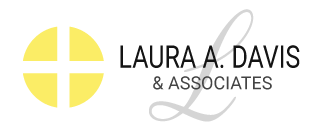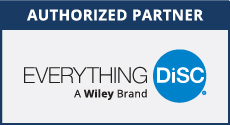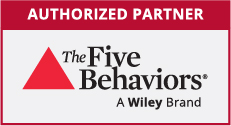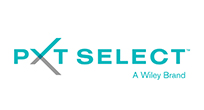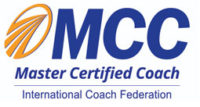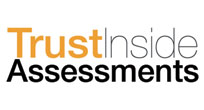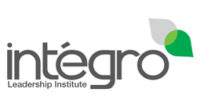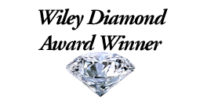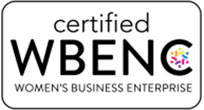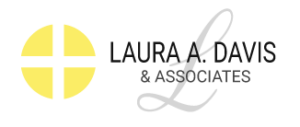Written by Laura A. Davis, www.lauraadavis.com
| People-Whispering Tip:The start of a new year and, in the case of 2011, a new decade is a wonderful time for reflection and renewal. Many of us have some ritual for honoring the gifts of the past year and for making resolutions for the new one. Yet, one doesn’t have to look far for dismal success rates and depressing statistics on the sustainability of commitments to behavior change whether they be New Year’s Resolutions or not.As a professional coach and facilitator, one of my greatest passions is learning why people do what they do. The corollary of that is to understand how to use this knowledge to increase the quality of our lives personally and professionally. Earlier in my career in working to assist clients as well as myself to learn and grow, I naively thought it was mainly about “knowing what to do.”
I actually knew better and yet there is such an emphasis in our culture on strategies, “how to’s,” certifications, and credentials that it can be seductive not to think that that is the main event. And I am not saying ignorance is bliss as it is important to know what your options are and to keep abreast of new developments in any field. As Goethe said, “we must always change, renew, rejuvenate ourselves; otherwise we harden.” Heaven knows in today’s world the recognition of the importance of resilience is certainly the opposite of hardening. We do need to stay current if not inundated. Yet over time, having witnessed the results of coaching and training thousands of individuals, teams, and employees in Fortune 500 companies, I have come to the conclusion that there are at least 4 main reasons why transformational, desired change doesn’t occur as rapidly as it might. Actually, the 5th main reason underlies all the rest which could be summed up with a lack of radical personal responsibility. That in of itself is an important topic for another day. The 4 main reasons conveniently make yet another acronym akin to WIIFM (what’s in it for me) and relate to radio and sound as well; they are HIFI for 1) Habits, 2) Ignorance and/or Misinformation, 3) Fear, and 4) Identity. There is a wonderful Spanish proverb which says “Habits are at first cobwebs, then cables.” If you have ever tried to change a habit, you may be smiling at this quote with a sense of recognition. The latest neuroscientific breakthroughs show that when we consistently think certain thoughts and reinforce them with feeling and behaviors, we form neural networks or circuits in our brains which become “hardwired” over time. Likening the brain to a computer, when certain programs are running, our actions become automatic, routine, and we are no longer aware of them. Behaving habitually takes no effort at all, and no conscious awareness means no personal responsibility needs to be exerted. The good news is that by not engaging in certain thoughts, feelings, and behaviors consistently, those neural networks atrophy and die and can be replaced with new, more productive patterns of thinking, feeling, and doing. Working with a coach and with transformational processes helps to release and replace some of these unproductive programs. The second barrier to effective sustainable change is ignorance and/or misinformation. Remember, humans once thought that the world was flat and that the sun revolved around the earth and that air flight was impossible. Who knows what else we will discover about managing our minds and emotions that will continue to support us in the coming years? For instance, I have found the techniques of energy psychology, especially the emotional freedom technique developed by Gary Craig, to be very effective in facilitating changing beliefs and therefore behavior. Do stay informed and do learn through books and reading and courses and whatever other educational media supports your goals. There is so much exciting research in the mainstream today about emotional intelligence, neuroscience, energy psychology, and much more that it is truly exciting. I truly believe that revolutionary changes lie ahead and I am optimistic about our collective future. Of course, I am not so naive to think that real change takes place from reading books and from going to seminars and training courses alone. It is life experience that truly teaches. And alas, ‘”the rubber meets the road” so to speak when we look at results over time. Both knowledge and intellect are wonderful tools when knowledge leads to insight which is supported by practical application. And that practical application must go deeper than just the behavioral level in order to stick. Which brings me to the third barrier to lasting, effective change which is simply put, fear. Fear is sourced from our emotional nature and yet can be reprogrammed through thought and repetition. In the late 90’s, I had the pleasure of working with a knowledgable change expert Harry Woodward who wrote about 5 major fears in his book Navigating Through Change. They are the subject of this month’s Transformational Coaching Tip so please scroll down to learn more. The main point I want to make here is that all of these fears are learned. In fact, the only two fears we humans possess from birth are the fear of falling and the fear of loud noises. Both of these undoubtedly served some evolutionary purpose in their day. The good news is, if all of our other fears are learned, then they can be unlearned or released and replaced with more effective beliefs and behaviors. Last, our identity is the main challenge when attempting to create lasting sustainable change whether that be as individuals, or in organizations on a collective level. Years ago, I quit smoking (at the wise old age of 23) through the help of an organization that no longer exists called Smokenders. What impressed me about the Smokenders approach was the lack of scare tactics and shaming to stop smoking. Instead, the emphasis was upon becoming a nonsmoker or one’s identity. Not only were the benefits of becoming a nonsmoker in terms of a healthier lifestyle addressed, but so were the identity-based issues associated with smoking. In short, they asked “who would you be as a nonsmoker?” I have always remembered the wisdom of that approach and apply it to my work today. As a footnote, I haven’t smoked since I was 23 (a few years ago!) nor do I have any desire to do so. Those neural networks have thankfully died and been replaced with healthier ones. So in seeking to change and grow, remember it is not just about resolve, will, to do’s, how to’s, and/or strategies. Instead, tune into the power of HIFI by understanding how to work with your habits, your ignorance and societal misinformation, fear, and identity. Here’s to your best decade yet! For more practical tools and application on how to apply this to your business, feel free to call us at 404-327-6330 and/or email me at Laura@lauraadavis.com. We are here to make you and your organization an inspired success! |
| DiSC® Assessment Application: 1) The Discovering Diversity Profile: Over the holidays, I finally went to visit the “Bodies” exhibit that everyone has been raving about. As someone who is not very knowledgeable about the human body and anatomy and physiology, I thought it would be somewhat interesting just for the heck of it. Instead, I came away from the experience with an incredible appreciation for the diversity of all of the systems in a human body and the incredible way they are designed to work together, each fulfilling a unique function, and yet expressing and fulfilling needs that work together in a unified whole.Similarly, a well-run organization has people who fulfill many unique functions in diverse and highly orchestrated ways, that when well-run, lead to a successful, unified whole. Successful organizations understand that the cultural backgrounds and experiences of their employees and customers are valuable resources which enrich the whole just like the diverse systems within a human body contribute to its well-being. The Discovering Diversity Profile helps employees:
The profile explores the complex issues surrounding diversity in four key areas which are:
The 20 page EPIC Discovering Diversity Profile individual report contains feedback about those items that need attention, provides suggestions for improvement, and offers a detailed action plan. Let us all be reminded of the incredible positive impact managing diversity well can have in whatever context you find yourself; a leader in business, in the non-profit world, in your family, and/or in your community. |
| Transformational Coaching Tip: |
Earlier I mentioned having worked with a change management expert on our basic fears and how they can get in the way of our creating lasting, sustainable change. Actually, it is normal to have desires and goals but when they become demands they can become unhealthy and generate fears.Psychologists agree there are five major categories of goals or desires which are:
The associated fear with “I must be right” could be a fear of making mistakes which could lead to procrastination. If you “must” be loved in an unhealthy way, you may fear rejection. This could result in a failure to act for fear of upsetting people with an unpopular decision for example. If your desire to succeed becomes extreme, you may fear failure such that you won’t take a necessary risk. Likewise, always needing to be in control can be at the root of fearing changes. This fear can result in the classic micromanaging behavior where you overcontrol people or a job function. Last, we coaches talk about the fear of pain or wanting to be comfortable or stay within your comfort zone. This can lead to inaction and freezing up for fear of “rocking the boat.” Another way to say this might also be the fear of the unknown. Regardless, awareness is the first step and an understanding of DiSC allows one to get at the underlying fears of people by style so that you can support them in moving through their self-imposed limitations. I invite you to call us at (404) 327-6330 or email me at Laura@lauraadavis.com to learn how to work with these desires in a healthy way to reach your personal and professional goals. To you and your organization’s BEST YEAR YET! |
